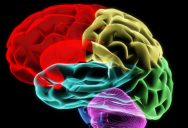Scientists Claim To Have 3D-Printed Functional Human Brain Tissue

In many ways, the human brain is the most important part of the body. It can also be vulnerable to things like physical damage, diseases like Alzheimer’s and Parkinson’s, and other issues.
A team of scientists from the University of Wisconsin-Madison may have successfully 3D printed human brain tissues, which could someday be used to treat these types of problems.
The new paper that was published says that they printed the tissues horizontally, layer by layer, with the cells being encased in “bio-ink” gel. The cells used in the tissue were developed from pluripotent stem cells.
One of the coauthors of the paper, UW-Madison neuroscience professor Su-Chen Zang, released a statement saying:
“The tissue still has enough structure to hold together but it is soft enough to allow the neurons to grow into each other and start talking to each other.”
Another important factor in the success of this tissue is that the cells were able to access sufficient oxygen and other nutrients through the growth media.
This is essential for the continued functioning of the tissue.

In addition to allowing the cells to survive, experiments have shown that they actually started forming networks, similar to the natural human brain.
These networks allowed communication with different cells in the tissue through neurotransmitters that were formed.
Zhang said of this:
“We printed the cerebral cortex and the stratum and what we found was quite striking. Even when we printed different cells belonging to different parts of the brain, they were still able to talk to each other in a very special and specific way.”
He went on to say:
“Our lab is very special in that we are able to produce pretty much any type of neurons at any time. Then we can piece them together at almost anytime and in whatever way we like. We can look very specifically at how the nerve cells talk to each other under certain conditions because we can print exactly what we want.”
Additional research is needed before this will have practical applications in treating people, but if it works as well as the paper claims, it is an exciting breakthrough.

Zhang talked about the future of this technology, explaining:
“This could be a hugely powerful model to help us understand how brain cells and parts of the brain communicate in humans. It could change the way we look at stem cell biology, neuroscience, and the pathogenesis of many neurological and psychiatric disorders.”
Exciting advancements in the science of the brain.
If you found that story interesting, learn more about why people often wake up around 3 AM and keep doing it for life.

Sign up to get our BEST stories of the week straight to your inbox.




